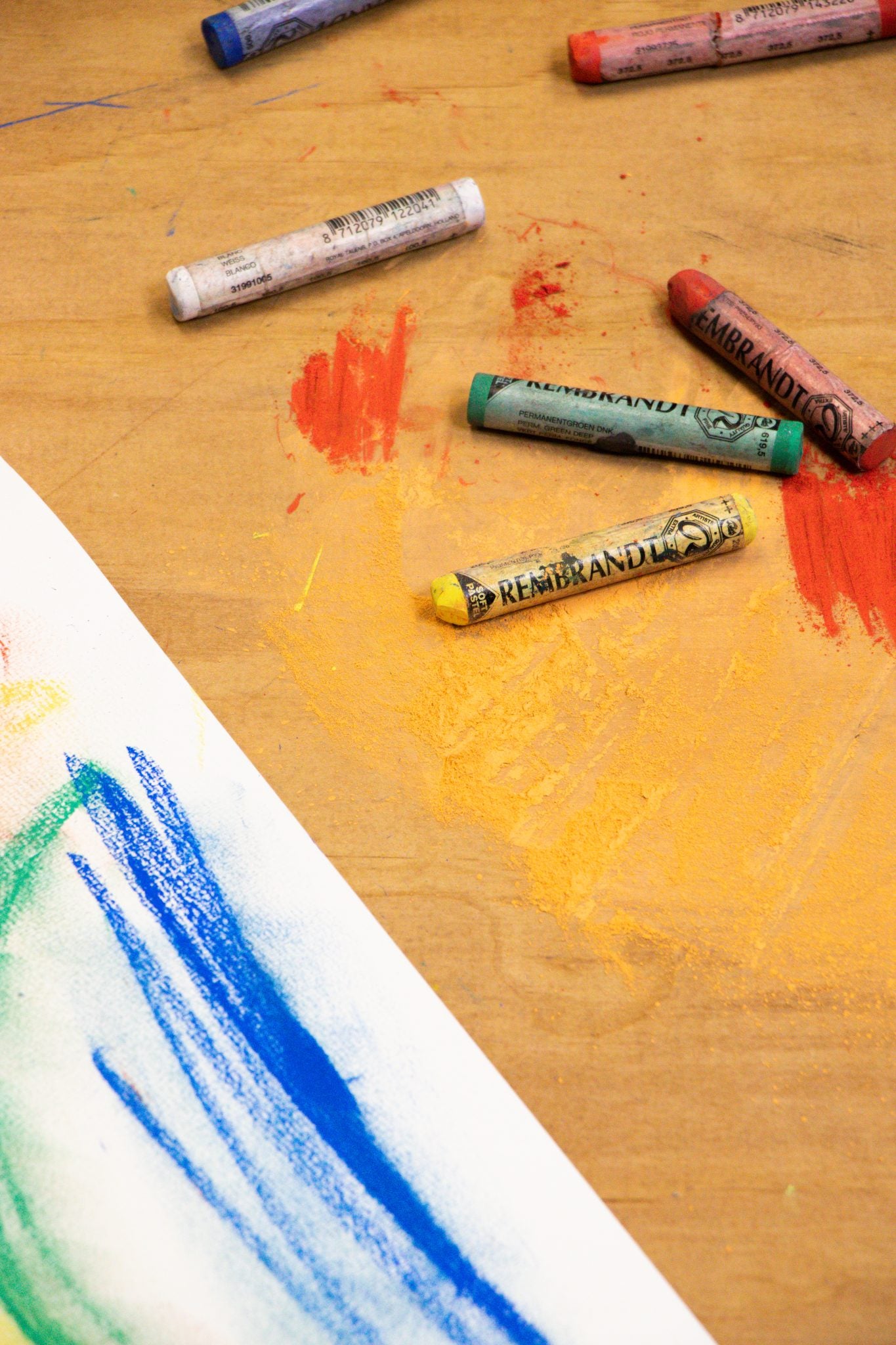Drawing Tools that Spark Ideas For Practice
January 31, 2022So you’ve just heard about our Opus Daily Practice BUT you aren’t sure what items could be best used, then this quick introduction might be of help. Truthfully, you can use any mark making tool on any surface to really get the ideas flowing, but we wanted to point out some of our favourite tools for getting those creative juices activated!
[Learn More about Opus Daily Practice 2022]
Graphite & Coloured Pencils
Most great art begins with a pencil!! Beginning with a bit of a quick lesson, pencil leads are compressed mixtures of graphite and clay which vary in hardness according to manipulations of the mixture. The softest pencils have little or no clay allowing more graphite particles to adhere to the paper’s surface. Pencils are marked with a number using the H and B systems to indicate the lead’s hardness. Medium to hard pencils are marked with levels of the H system. For example, a full range a may look like this:
 We have many different pencils brands to choose from and if needing a starting point our Opus Essential Graphite Pencil sets can do this for you.
We have many different pencils brands to choose from and if needing a starting point our Opus Essential Graphite Pencil sets can do this for you.
Upgrade your pencil sketches with a bit of colour!! Our Coloured pencils offer the same drawing characteristics as regular pencils however, coloured pencils can be overlaid on each other to achieve a myriad of effects. Taking it one step further with water-soluble pencils and voila, you now have the subtle effects of a watercolour painting.
With all types of pencils, having a sharpener and an eraser within arms reach is always a good ideal.
 Charcoal & Pastels
Charcoal & Pastels
Many artists choose to work in both Soft Pastels & Charcoal because they apply quickly, blend together nicely and the marks produced can be rich and sensual. There’s no premixing on a palette, no need to add mediums and both Soft Pastels and Charcoal can be applied to almost any surface with a little tooth but this also means both can be smudged easily. The use of a workable fixative or a permanent fixative is a highly recommended tool.
Charcoal is made from vine, willow or other twigs that have been charred for use as a drawing material and it is superb for blending and creating gradations of black. Sold mainly in pencil and stick form, charcoal is available in soft, medium, hard and compressed versions. Soft charcoal is light and easily erasable but does not make a true black. Compressed charcoal makes thick heavy rich blacks.
Though Soft Pastels work like charcoal, they are a powdered pigment bound together with a gum or resin and shaped into sticks or pencils. Several types of pastels are available in both student and artist grade. Student grade pastels are economical and ideal for experimentation. Artist grade pastels like Sennelier and Rembrandt use finer pigments making them more expensive, but their strong colour quality and smooth consistency are the reward.
Markers
Markers are so much fun and are appreciated for their immediate and colourful results. It’s a great way to lay down colour quickly and experimenting is highly recommended. It’s best to start light and build up to your colours since it can be tough to lighten a colour once you’ve gone too dark. Most marker brands have a colourless blender to blend and soften the edges of your work but depending on the surface, markers do tend to dry quickly so making any colour changes after the fact is tricky. The Marker brands available at have really good colour selections, though if this overwhelms you, consider keeping it simple with just a colour set.
Papers
There are so many paper choices, that deciding this too can be a task in itself, but the paper choice does impact the look of any drawing. Many types of paper are applicable surfaces for pencils and coloured pencils with a bit of tooth – a subtle texture that allows the pencil marks to hold. Some, however, can be quite smooth, allowing you to get nice, sharp details. If you prefer, you can also use a very rough paper, like watercolour paper, to emphasize a rugged texture in your drawing. Getting started with our Opus Essential Sketch Paper products can be a good start for all drawing projects & practices, but if that’s not quite what you are looking for, our staff can point you in the right direction. Being artist’s themselves, our staff love to hear about your projects, ideas, and questions.
Overall, the part of the Opus Daily Practice challenge we enjoy the most is seeing the community get together, encourage each other, and share tips with each other as practice makes progress for everyone. Have fun creating and sharing!!
Snippets of this article come courtesy of the team at macphersonart.com


